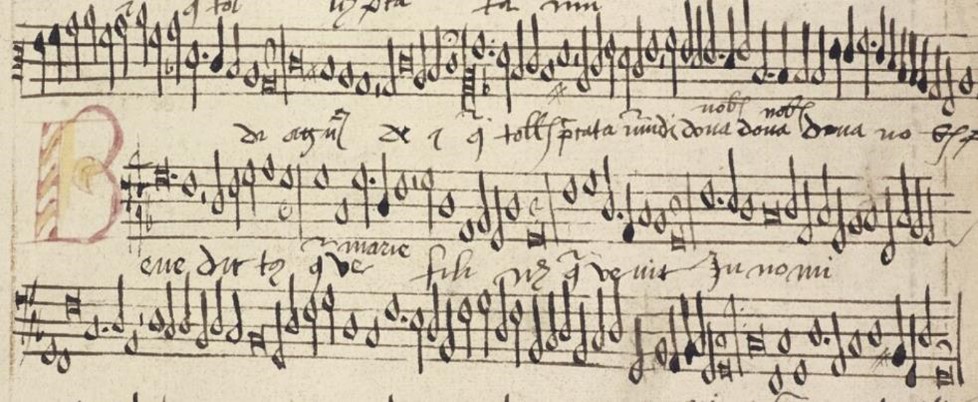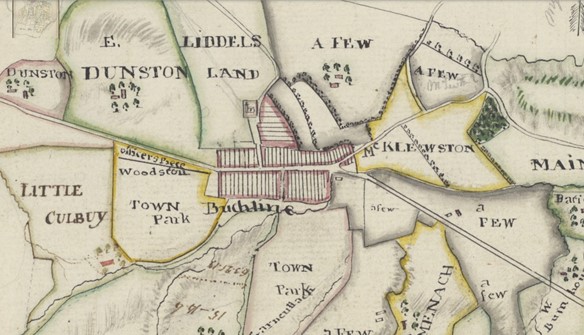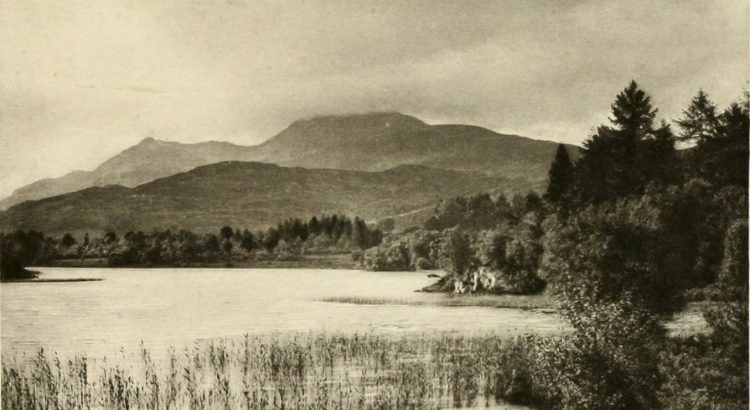Collated by Jamie McIntosh.
The Stirling authority area is at the heart of Scotland and spans the traditional boundary between the lowlands and highlands. To the west of the region sit the Campsie Fells and the Fintry Hills, which eventually give way to Loch Lomond. The boundary of the authority runs up the east side of the loch, taking in the Trossachs and Ben Lomond. The northern area of the authority is generally more mountainous, boasting several munros. Perhaps one of the most recognisable munros in the region is Ben More, which lies just to the south of Crianlarich. The north-east of the authority is again bounded by bodies of water, with the boundary running halfway along Loch Tay before falling away to Loch Earn to the south. At this point the boundary then passes through the peak of another impressive munro, Stùc a’ Chroin.
The city of Stirling, which sits in the south-east of the region, was granted royal burgh status in 1130, and then city status in 2002. Its strategic position on the River Forth as it meets the Firth of Forth, with vantage points over both the highlands and lowlands, has meant the city has found itself at the centre of Scotland’s royal, administrative, and cultural history for much of the last millennium.
Where to find local collections:
Each local library has a small collection with a larger collection available at the Central Library, Stirling https://www.stirling.gov.uk/libraries-archives/history-research-in-libraries/local-history-heritage/
Stirling Council Archives https://stirling.gov.uk/archives
Books – non fiction
Strathendrick and its Inhabitants from Early Times by John Guthrie Smith, 1896. [In Histories of Scottish Families]
https://digital.nls.uk/95335539
Summer at the Lake of Monteith by P. Dun, 1866. [In Histories of Scottish Families]
https://digital.nls.uk/94833302
Gaelic Topography of Blaqhuidder Parish as given in the Ordnance Survey Maps edited by Alexander Murray MacGregor and David Cameron, 1886. [In Books and other items printed in Gaelic from 1871 to 1900]
https://digital.nls.uk/109894962
Stirling Presbytery Records 1581-1587 edited by James Kirk, 1981. [In Scottish History Society Publications]
https://digital.nls.uk/126160634
Guide to Doune Castle by James Dunbar, 1900. [In Antiquarian Books of Scotland]
https://digital.nls.uk/110184174
Book – fiction
The Lady of the Lake by Sir Walter Scott, 1871. [In Antiquarian Book of Scotland. This poem is set in and around the Trossachs, in particular Loch Katrine.]
https://digital.nls.uk/107150023
The Green Graves of Balgowrie by Jane Helen Findlater, 1896. [In Works by selected Scottish authors – Jane Helen Findlater. Jane Helen Findlater spent 20 years of her life living in Lochearnhead, and the National Library of Scotland has digitised several of her novels.]
https://digital.nls.uk/128693598
The Life and Exploits of Rob Roy MacGregor printed by William Macnie, c.1820-1830. [In Chapbooks printed in Scotland – Scotland/Scots. This 19th-century historical fiction charts the adventures of Rob Roy, predominantly in and around the Stirlingshire area.]
https://digital.nls.uk/104186831
Film
Stirling: Gateway to the Highlands, c.1938. [In Moving Image Archive]
https://movingimage.nls.uk/film/0512
Royal Stirling, 1972. [In Moving Image Archive]
https://movingimage.nls.uk/film/2379
The Skimsters, 1959. [In Moving Image Archive. Waterskiers on Loch Earn, practising and taking part in Loch Earn Water Skiing championships.]
https://movingimage.nls.uk/film/2668

Manuscript collection
The Carver Choirbook, 16th century. [In Early Scottish Manuscripts. Also known as the Scone Antiphonary; the manuscript was partially written by, and probably in the use of Robert Carver. Although Carver was a canon of the Augustinian Priory at Scone, scholars now agree that it is probable that the work was copied at the Chapel Royal dedicated to St. Mary and St. Michael in Stirling.] Adv.MS.5.1.15
https://digital.nls.uk/100214610
‘Extracta ex variis cronicis Scotiae’, early 16th century. [in Catalogue of Manuscripts. A manuscript produced in Scotland containing extracts from Scottish chronicles, primarily drawing upon the works of Fordun and Bower, but also including independent entries. Historians suggest that Alexander Myln, Abbot of Cambuskenneth, was responsible for the compilation of the work. The manuscript was in the possession of William Chisholm, bishop of Dunblane, and in 1550 was given by him to Henry Sinclair, at that time deacon of Glasgow, later Bishop of Ross.] Adv.MS.35.6.13 A digitised version of this manuscript will be made available on the Digital Gallery in early 2021.
Chartulary of Cambuskenneth Abbey, 16th century. [In Catalogue of Manuscripts. A formal transcript of all the charters of the Abbey.] Adv.MS.34.1.2 A digitised version of this manuscript will be made available on the Digital Gallery in early 2021.
Cambuskenneth Abbey, Stirlingshire, 1789. [In Hutton Drawings] Adv.MS.30.5.23
https://digital.nls.uk/97134489
Doune Castle and Dunblane Cathedral, c.1781-1820. [In Hutton Drawings] Adv.MS.30.5.23
https://digital.nls.uk/97134485
Maps
Lower Glen Almond, Strathearn Pont 21(2), c. 1583-1596 by Timothy Pont. [In Pont Maps of Scotland. This map shows the Munro of Stùc a’ Chroin with Loch Earn.] https://maps.nls.uk/pont/view/?id=pont21
Bathymetrical Survey of the Scottish Lochs: Lake Mentieth, 1908. [In Bathymetrical Survey of the Fresh-Water Lochs of Scotland, 1897-1909] https://maps.nls.uk/view/74422111
Tourists Map of Loch Lomond and the Trossachs by Gall & Inglis, 1915. [In Counties of Scotland, 1580s-1940s] https://maps.nls.uk/view/142842203
Land Utilisation Survey: Loch Katrine and Loch Earn, c.1931-1935. [In Land Utilisation Survey, Scotland, 1931-1935] https://maps.nls.uk/view/74425154
Buchlivie Lands by Charles Ross, c. 1781. [In Estate Maps of Scotland, 1730s-1950s] https://maps.nls.uk/view/216586687

An e-resource
SCRAN, Stirling. [In SCRAN Your Area. With links to various resources related to the Stirlingshire area grouped into themes A National Library of Scotland login is required] https://www-scran-ac-uk.nls.idm.oclc.org/hierarchy/yourlocalarea/2/4597/Stirling
A business
Industrial Stirling, 1950. [In Moving Image Archive. This film shows the principal industries of Stirlingshire including coal mining, brick making, soap making and oil refining. Clips include Polmaise Colliery, now modern-day Fallin.] https://movingimage-onsite.nls.uk/film/1956
Charles Randall, printer. [In Scottish Book Trade Index and Chapbooks printed in Scotland. Charles Randall was the first bookprinter in Stirling since Robert Lekprevick. He was primarily a printer of chapbooks and after his death, Mary Randall, his wife continued to publish large numbers of chapbooks.] https://data.cerl.org/sbti/006163 https://digital.nls.uk/chapbooks-printed-in-scotland/archive/104184103
A person
A catalogue Raisonné of the British Museum collection of rubbings from ancient sculptured stones by Christian Maclagan, 1898. [In Online Catalogue and HathiTrust – External Resource. Christian Maclagan was a Scottish antiquarian and archaeologist, born near Denny, who was best known for her work on prehistoric sculptures and stones.] https://search.nls.uk/permalink/f/sbbkgr/44NLS_ALMA 21458891830004341 https://hdl.handle.net/2027/mdp.39015063818333
A song or piece of music
The Battle of Bannockburn: An Old Heroic Ballad, undated. [In Chapbooks printed in Scotland – War] https://digital.nls.uk/104184754
The Braes o’ Balqhuidder by Robert Tannahill, arranged by J.T. Surenne, 1849. [In Special Collections of Printed Music – Inglis Collection] https://digital.nls.uk/94708508
A ghost/mythical creature
The Secret Commonwealth of Elves, Fauns, & Fairies. A Study in Folklore and Psychical Research by Reverend Robert Kirk, 2nd edition, 1893. [In Online Catalogue, Catalogue of Manuscripts and Archive.org – External Resource. Robert Kirk, minister of Aberfoyle in the 17th-century, wrote this work which includes traditions about witches and fairies, giving an insight to life in a Highland parish. https://manuscripts.nls.uk/repositories/2/resources/18491
https://search.nls.uk/permalink/f/sbbkgr/44NLS_ALMA21431753700004341
https://archive.org/details/Kirk1893CommonwealthElves
A castle or other historic building
Leighton Library, a Category A listed building founded with the collection of Robert Leighton, Bishop of Dunblane.
Robert Leighton in Scots Worthies, 1560-1688 by J. B. Craven, 1894. [In Histories of Scottish Families] https://digital.nls.uk/95152490
Leighton Library Collection, University of Stirling. https://libguides.stir.ac.uk/c.php?g=530467&p=3628592
Leighton Library, Canmore. https://canmore.org.uk/site/24731/dunblane-the-cross-leighton-library
Food
Queen Mary of Guise, also know as Mary of Lorraine, was resident at Stirling Castle and is often credited with introducing new foods and recipes to the royal household. [In Recipes from Scotland and Catalogue of Manuscripts.] https://digital.nls.uk/recipes/themes/preserves/fruit-trees.html
https://manuscripts.nls.uk/repositories/2/archival_objects/17670
Journal of A Coaching Tour in Scotland by Madeline Halkett, 1893. [In Catalogue of Manuscripts. Madeleine Halkett and her family set out by carriage from Pitfirrane House for a week’s tour to the Trossachs. Their route took them from Bridge of Allan to Dunblane, Callander, Aberfoyle, Loch Katrine and the Lake of Menteith. The journal is written in verse and illustrated with drawings, which include Stirling Castle, Dunblane Cathedral, Doune Castle, the Dreadnought Inn Callendar, the Trossachs Hotel and Loch Katrine. There are also drawings and comments on the inns they stayed in, their staff and meals served.] https://manuscripts.nls.uk/repositories/2/resources/4535
Photographs
Inchmahome Priory, 1936. [University of St. Andrews Photographic Database – External Resource] https://collections.st-andrews.ac.uk/item/from-e-inchmahome-priory/56887
Fintry Village from the West, 1947. [In University of St. Andrews Photographic Database – External Resource] https://collections.st-andrews.ac.uk/item/fintry-village-from-west/66551
Bridge of Allan Hydropathic, 1878. [In University of St. Andrews Photographic Database – External Resource] https://collections.st-andrews.ac.uk/item/bridge-of-allan-hydropathic/13391
Something about the county town
Ane Ballat of the Fenyeit Frier of Tungland, How He Fell in the Myre Fleand to Turkiland by William Dunbar, composed early 16th-century, preserved in the Bannatyne Manuscript (folio 117r) 1568, and printed 1893. [In Scottish Text Society Publications and Early Scottish Manuscripts. Dunbar’s poem references John Damian, physician to King James IV, who allegedly attempted to fly from the ramparts of Stirling Castle in 1507.]
https://digital.nls.uk/107454083
https://digital.nls.uk/74522214
Something about a village or small place
The Story of Flanders Moss National Nature Reserve, 2008. [In Online Catalogue – full PDF available] https://search.nls.uk/permalink/f/sidtjd/44NLS_ALMA51632137850004341
Further reading:
The Underground City by Jules Verne, 1877. This work was published in the original French as Les Indes Noires, and is also known by its English title The Child of the Cavern. The story is set in an Aberfoyle coal mine. https://search.nls.uk/permalink/f/1jc5lod/
The Moss: News from Flanders Moss National Nature Reserve https://search.nls.uk/permalink/f/sbbkgr/44NLS_ALMA21557538340004341
Bibliotheca Leightoniana, Dunblane by W. J. Couper, 1917. [In Online Catalogue] https://search.nls.uk/permalink/f/sbbkgr/44NLS_ALMA21545249760004341
